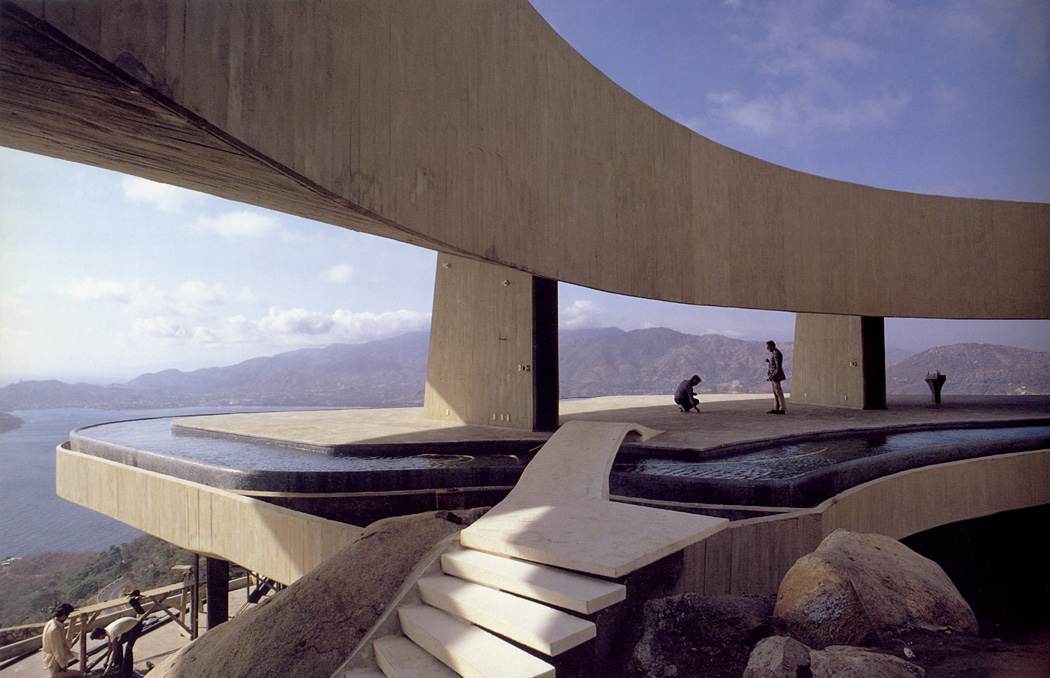
“To me, architecture is an art, naturally, and it isn’t architecture unless it’s alive. Alive is what art is. If it’s not alive, it’s dead, and it’s not art.”—John Lautner
Photographers and filmmakers return to many of John Lautner’s work again and again, and it’s easy to see why. His philosophical approach to design and commitment to uniqueness and coherence with a building’s natural surroundings makes his work remarkable.
Foundations for the Architect
Born in 1911 Michigan, John Lautner’s first upclose encounter with architecture came early in life. At 13, John helped his parents build their home up from the ground along the rocky shore of Lake Superior. The family built it all themselves and named the cabin Midgaard.

According to John Lautner’s biography here, in Norse mythology, Midgaard is the place where humans live, between the lands of ice and fire. The Lautner family built the cabin without machinery, and the long labor alongside his dad no doubt gave young John an intimate appreciation for the work and reward that goes into building a unique structure in harmony with its environment.
Lautner went on to study as an apprentice under the great Frank Lloyd Wright. Wright encouraged his apprentices to find their own feet. Lautner explains Wright’s mentoring philosophy: “The main thing Wright stressed was to have a total idea. If you didn’t have a total idea, you didn’t have anything.”
Go West, Young Man
With first-rate training and a mentor who encouraged him to find his own architectural vision, Lautner set up shop in the Golden State, where the bulk of his designs stand.
A far cry from the lake- and forest-rich land of his native Michigan, Los Angeles and environs afforded opportunity to contribute to the architectural conversation with its postwar expansion and clients who were not afraid to break the mold.

Now it is difficult to imagine the area without his designs. His design for the the 1949 West Hollywood coffee shop was the impetus for an architecture critic’s coining the phrase “Googie architecture.” The style’s influence articulated in architectural form the optimism of the Space Age.
Highlight Reel


Another of Lautner’s most famous residential designs is the Goldstein House in Beverly Hills, California. The home has appeared on screen many times, especially the coffered concrete ceiling angled up over the pool.
Whether as a teenager laying the floorboards down at his family’s lakeside home, working alongside Frank Lloyd Wright or dreaming up designs that seem poised to take flight, Lautner’s work took architecture to new heights.
Not done reading about Lautner and ogling over his work? Click here.













2 comments